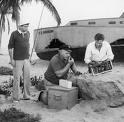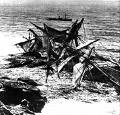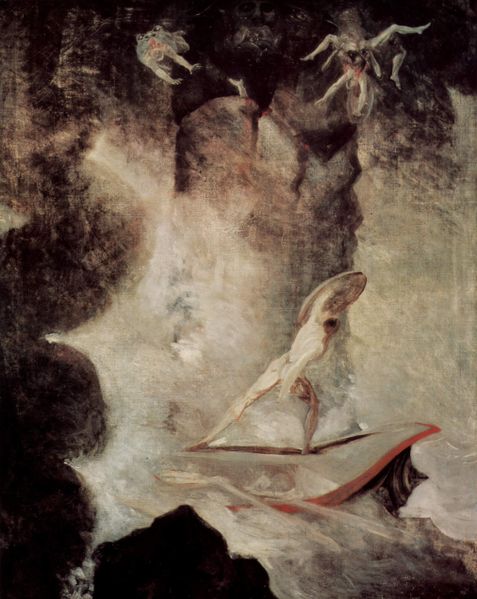The Worst Sailing Day of My Life
May 16, 2009
Groundhog Day had been a disappointment. But I was not ready to give up. So a few days later, I noted that the river currents were subsiding. The flow at Elizabeth was 7,000 cubic feet per second and 12,400 at Natrona. By the time I arrived at the marina, I was disappointed to see that the current was still running at a slow walk, but the numbers were saying that it had to be slower than Groundhog Day.
This time I was alone. It was heartening to find that I could move the boat from its trailer, rig it and get it launched all by myself.
Once again, I paused to take stock. The winds seemed good. The forecast was for 15 mph winds from SSW. I measured erratic winds, however, coming more from the South East, gusting up to 12 mph.
I set off for what was about to be the worst sailing experience of my life.

As before, the winds drove the boat over the water. And as before, no matter what I did, I could not gain against the current.
I began to look more closely at the wind. It was coming roughly from the South. That meant that its flow was obstructed by a large hill looming over the river. The wind, I surmised, might be whipping around through a small valley, aligned with the West End Bridge. It would flow across the river in front of the valley, along it at the marina and who knows what in between. To gain on the current, I needed to sail into that wind. But once I'd gained a little, its direction would change. I'd lose power and sit trying to settle a flapping sail.

These changes of direction were becoming hard to follow. Then the erratic character of the wind took its toll. It would drop, leaving me to drift back with the current. When it would pick up again, it would be coming from an entirely different direction. My sails would be set incorrectly and they would flap about inconsequentially. Or worse, I would have the mainsheet cleated (fixed), so that a good puff of wind would tip the boat right over.

That was very disturbing and it happened twice. It is one thing to tip a sailboat in a windy lake surrounded by other pleasure craft. It is another to do it in a river, alone, with a current that is carrying you inexorably away, in a channel that an hour or so before had carried a large barge.
It proved to be easy to right the boat. I'd had plenty of experience righting an especially tippy little sailboat over thirty years ago in Sydney harbor. On the Bravo, there's a righting line underneath. You haul on it and the boat rises majestically like Neptune from the deep, shedding great currents of water, while you take a dunking. You then haul yourself back onto the boat, bedraggled and dripping.
I was now getting quite rattled and I put back into the marina, whose magnetic pull I had never really escaped and began to take stock. Perhaps, I began to wonder, the nay-sayers were right. You shouldn't sail on the river. It's just foolhardy. You'll only get yourself into trouble.
The one thing I wanted to avoid was tipping. So I hatched a plan. The beauty of a roller furled sail is that it can easily be "reefed." That is, you can partially roll it up so that its wind catching area is greatly diminished. That is how you keep control of a sailboat when there is too much wind for the full sail. I'd lost my appetite for bravery. I set off again, this time with a reefed sail, proceeding with great caution. It would now be much harder for a puff of wind to tip me. But it would also be harder for me to extract enough power from lighter winds to make headway against the current. The river was winning.
Alas, I just could not keep track of the direction of the winds. On the southern bank of the river, opposite the marina, there is a row of docked barges. I eventually found myself pressed up against them by the wind. The wind was coming from the south, but it was whipping so fully round the hill and barges that it was now coming from the north. I was trapped, I mused, in the ancient sailor's nightmare: a lee shore. That is one toward which the winds blow, carrying boats to wreckage and sailors to their doom.



I was now completely befuddled. Nothing was working. I furled the sail, drew out my paddle and began a slow, laborious and shameful paddle across the river, against the wind and current back to the marina.

Every nautical tradition speaks of deathly traps for sailors. On the Rhine, the maidens of the Lorelei sing their song to lure sailors onto the rocks. Ulysses sailed his ship between Scylla and Charybdis. He became the hero of legend because he succeeded where so many wretches had failed. As I struggled to navigate my boat, awkwardly juggling paddle and rudder, I was one of those wretches.
John D. Norton
Back to main